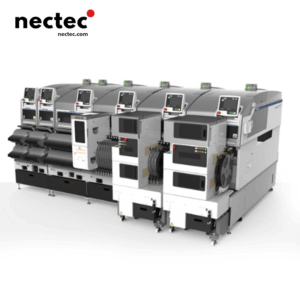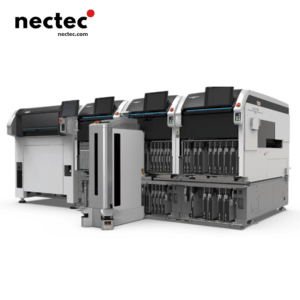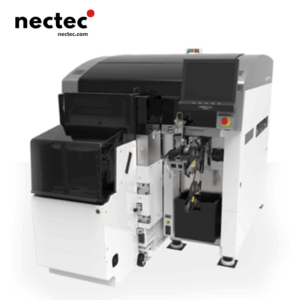As the demand for consumer electronics continues to surge globally, the need for high-quality manufacturing processes has never been more critical. At the heart of this revolution lies Surface Mount Device (SMD) placement machines, which have been pivotal in optimizing production efficiency, enhancing accuracy, and driving down costs. This article delves into the remarkable advancements in SMD placement technology and how they have shaped the future of the electronics industry in China.
Understanding SMD Placement Machines
SMD placement machines, also known as pick-and-place machines, are essential in the electronics manufacturing process. These machines are designed to place surface mount devices onto printed circuit boards (PCBs) with precision and speed. With the miniaturization of electronics, the need for efficient and accurate placement has become increasingly important.
The Evolution of SMD Placement Technology
The journey of SMD placement technology began in the 1980s when electronic components were becoming smaller and more intricate. Initially, manual methods dominated the industry, leading to inefficiencies and higher error rates. However, as technology progressed, the introduction of automated machines revolutionized the manufacturing landscape.
Modern SMD placement machines utilize advanced features such as vision systems and robotic arms, allowing for rapid and precise placements. Furthermore, innovations in software have led to sophisticated programming capabilities, enhancing the adaptability of machines to various production needs. The continuous evolution of these technologies has enabled manufacturers in China to produce higher volumes of electronics with exceptional quality.
Benefits of SMD Placement Machines in China
1. Increased Production Speed
One of the most significant advantages of SMD placement machines is their ability to operate at incredible speeds. Compared to manual assembly methods, these machines can significantly reduce production times, allowing manufacturers to meet growing market demands. With the capability to place thousands of components per hour, the overall efficiency of the manufacturing process is drastically improved.
2. Enhanced Accuracy and Precision
In the electronics industry, accuracy is paramount. Any misplacement of components can lead to defective products and increased costs. SMD placement machines are equipped with advanced optical and laser alignment systems that ensure each component is placed with millimeter accuracy. This level of precision minimizes errors and reduces waste, maximizing productivity while adhering to stringent quality standards.
3. Flexibility in Production
Modern SMD placement machines boast remarkable flexibility, allowing manufacturers to quickly adjust production setups for various products. This adaptability means that a single machine can handle multiple component types and sizes, reducing downtime and labor costs when switching between different products. In an era where customization is key, this flexibility is a game-changer for manufacturers in China.
Challenges Faced by SMD Placement Machine Manufacturers
1. Technology Upgrades
While advancements in technology have propelled SMD placement machines to new heights, these innovations also come with challenges. Manufacturers must continuously invest in updating their machines and software to remain competitive. The fast pace of technological change can overwhelm companies trying to keep up, especially smaller manufacturers with limited resources.
2. Skilled Workforce Shortage
Even with advanced machines, a skilled workforce is essential for effective operation. The complexity of SMD placement machines requires operators who are trained in electronics and robotics. In China, the rapid expansion of the electronics industry has led to a shortage of qualified personnel. This gap presents a challenge to manufacturers hoping to leverage automation fully.
The Future of SMD Placement Machines in China
The outlook for SMD placement machines in China remains optimistic. As the country continues to be a global manufacturing hub, the demand for these machines is expected to rise. Advances in artificial intelligence and machine learning are set to transform automated processes further, making SMD placement machines even smarter and more efficient.
Moreover, the ongoing push for sustainability in manufacturing is likely to influence the development of SMD placement technology. Innovations aimed at reducing energy consumption and minimizing waste will play a crucial role as the industry moves toward greener practices.
Conclusion
As the electronics industry continues to evolve, SMD placement machines will play an instrumental role in shaping the future of manufacturing in China. Their ability to enhance speed, accuracy, and flexibility has solidified their importance. The challenges that lie ahead, including the need for ongoing technological advancements and a skilled workforce, must be addressed to ensure continued growth and success in this dynamic industry.










